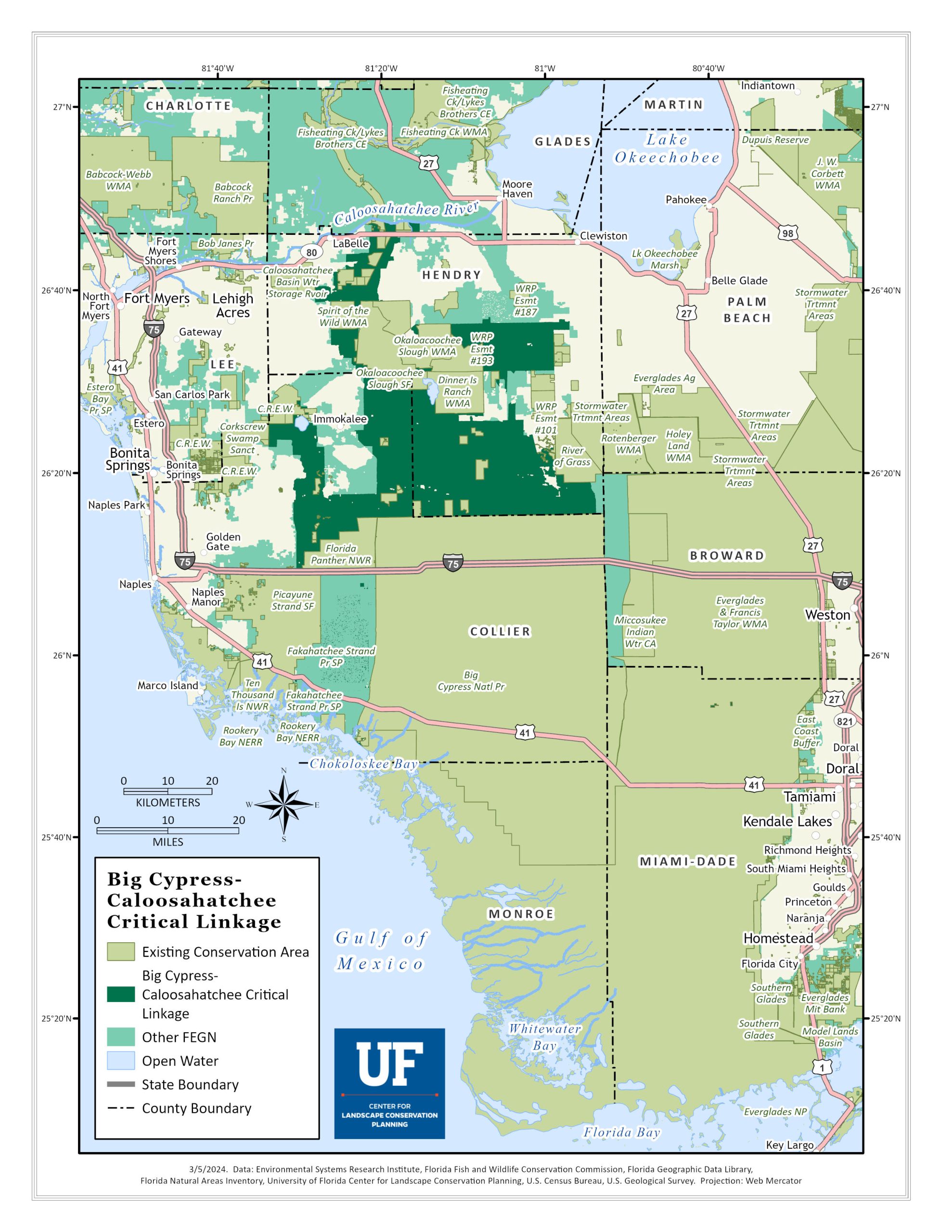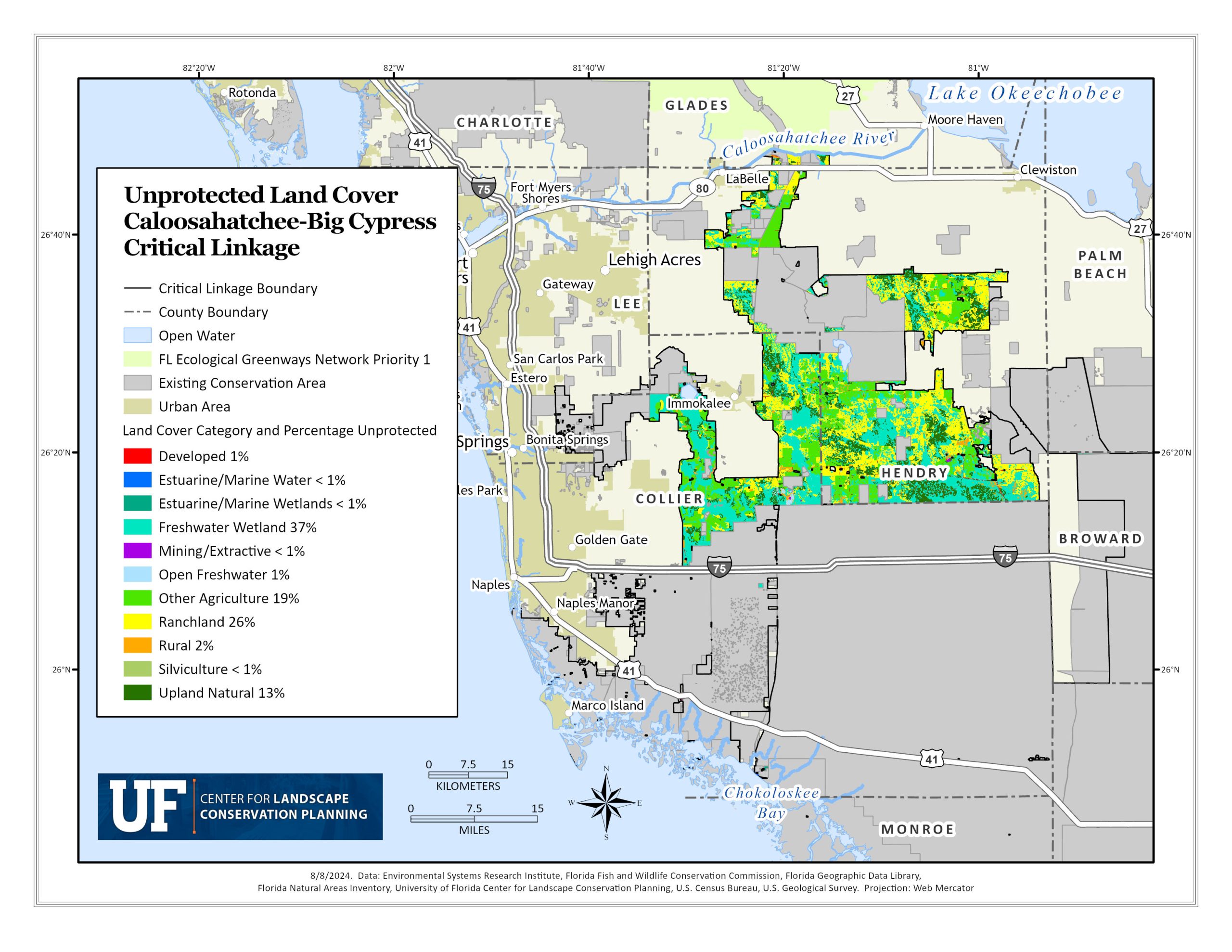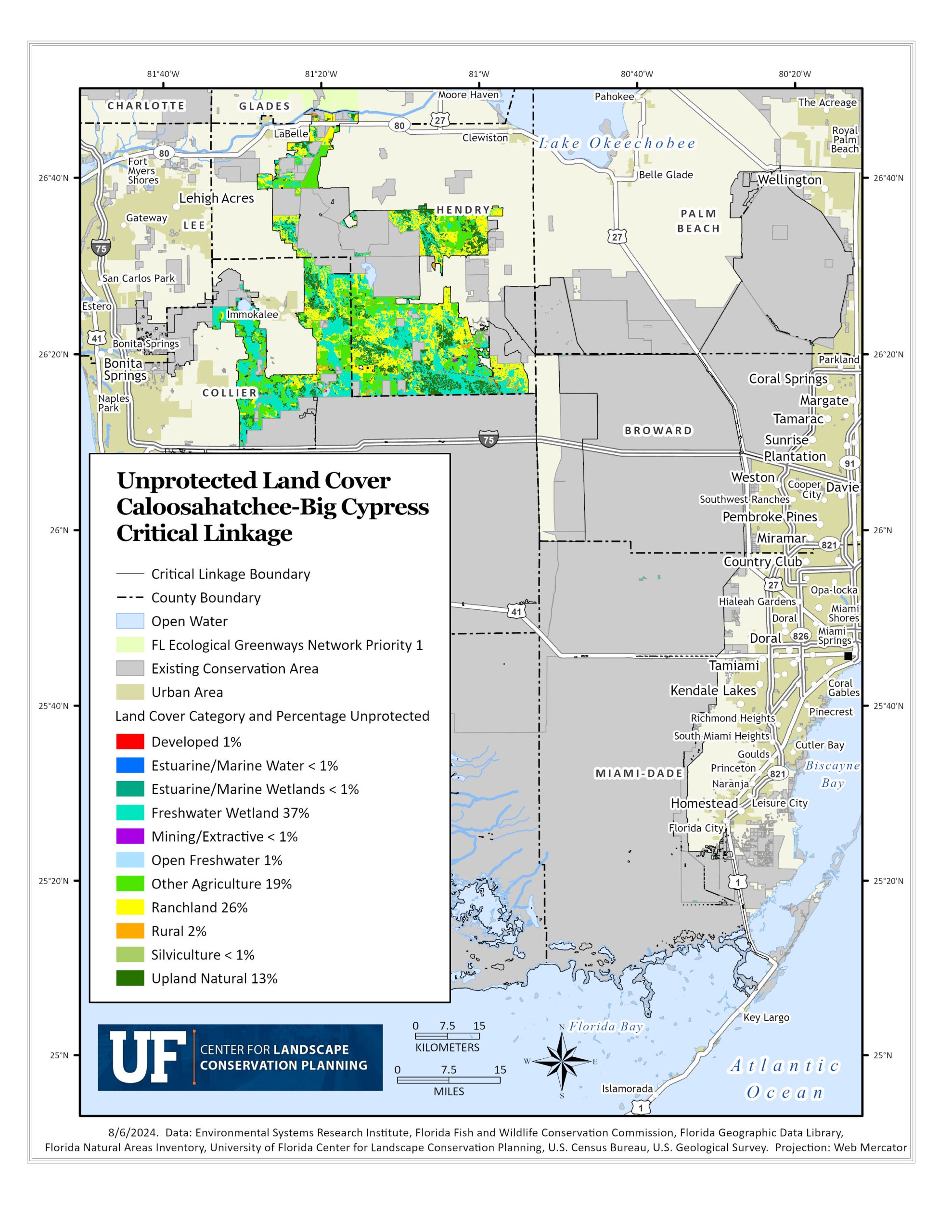The Big Cypress-Caloosahatchee Critical Linkage
A unique mosaic of sloughs and cypress swamp, wet prairie flatwoods and other wetlands ecosystems across a region dominated by Florida ranchlands, the Big Cypress-Caloosahatchee critical linkage preserves the first link between the Everglades and the rest of the Florida Ecological Greenways Network. This critical connection has become well known for its importance to the Florida Panther, water management and resilience for the state of Florida in the face of sea level rise.

A unique mosaic of sloughs and cypress swamp, wet prairie flatwoods and other wetlands ecosystems, the Big Cypress-Caloosahatchee critical linkage preserves the first link between the Everglades and the rest of the Florida Ecological Greenways Network to the north. This critical connection has become well known for its importance to the Florida Panther, water management and resilience for the state of Florida in the face of sea level rise.
The Florida panther’s primary breeding range encompasses the southernmost area of the state, Southwest of Lake Okeechobee south to the terminus of Everglades National Park. Within this range, the Big Cypress – Caloosahatchee critical linkage represents the still unprotected panther habitat north of Big Cypress. The sloughs, cypress swamps, wet prairies, wet flatwoods and other wetland ecosystems within the ranchlands that dominate the region are a refuge for the Florida Panther and other threatened or endangered plants and animals. Much of this land has been identified for its high landscape integrity index and high priority for rare species habitat conservation, biodiversity resources, and natural floodplain. The Caloosahatchee River has long been considered the northern extent of Panther habitat, but now we know female panthers have been crossing it; migration northward is already beginning. However, there is no established population north of the river. The establishment of a strong linkage north would allow for more “dispersal zones” for the panther – land where they will migrate to establish new populations.
Providing this path for the Florida Panther is dependent on protection of a diversity of currently unprotected lands between Big Cypress National Preserve and the Florida Panther National Wildlife Refuge to the south, and a multitude of state forests, water management areas, and other protected lands to the north. Ranchlands with pasture, wetlands and other terrestrial ecosystems account for the majority of this unprotected land. Much of the land is also within the Big Cypress Reservation. The Seminole tribe have raised cattle with genetics ideal for South Florida’s environmental conditions since the 1500s. Their cattle continue to roam the vast prairies, cross wetlands and graze in pasture managed similarly from generation to generation – preserving culture as well as ecosystem services that the ranches prairie-like pasture and wetland ecosystems provide.
Habitat loss to development is the top threat to the completion of the Big Cypress – Caloosahatchee Linkage. According to 2070 development trends, the western component of the linkage as well as northern land is the linkage is projected for development. If this trend continues, development will effectively cut off Crew Wildlife Management Area from the linkage, as well as pressure the existing edges of Florida Panther National Wildlife Refuge. A changing climate also threatens this linkage: sea level rise is projected to continue affecting the historic hydrologic cycle in the region, and saltwater intrusion is expected to impact fresh water reserves. Primary and secondary zones for panther habitat are at a very low elevation above sea level – meaning the future of their range is at threat. Three feet of sea level rise, which is expected to occur by the end of this century, would inundate approximately 30% of existing panther habitat.
Successes for the linkage, such as the 4-million acre Everglades to Gulf Conservation Area, are creating partnerships with landowners that protect land in conservation easements and other programs to protect the ecological integrity, ecosystem services and other valuable assets unique to this south Florida region. Further successes for the Big-Cypress Caloosahatchee Linkage, predominately conservation partnerships with ranch owners and The Big Cypress Reservation, will continue to strengthen the resiliency of the region as a critical corridor, component of south Florida resiliency and culturally significant ranchlands.
Unprotected Land Cover Maps for the Big Cypress-Caloosahatchee Linkage
The future of the linkage is dependent on the protection of currently unprotected land within this FEGN / Florida Wildlife Corridor Priority One region These maps provide a breakdown of the types of unprotected land cover in the Big Cypress-Caloosahatchee linkage.
Right padding
6



